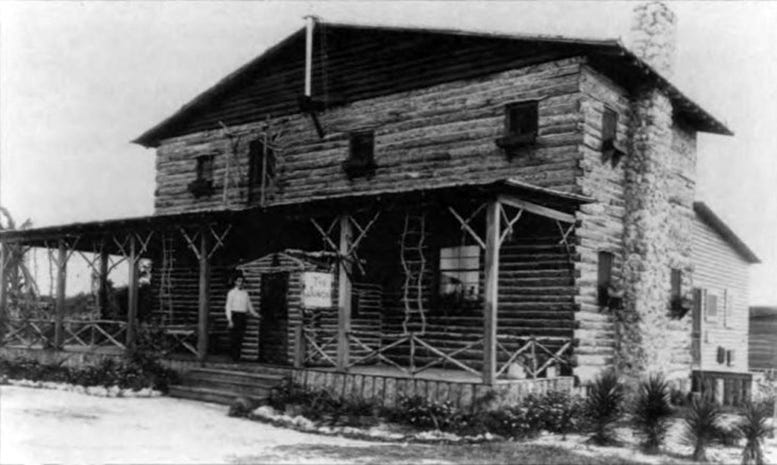Miami Beach's First Speakeasy Raided in 1921
A raid on a remote facility on Miami Beach on February 3, 1921, just a year after the ratification of prohibition, revealed a speakeasy operation. This is the story of the Jungle Inn.
In February of 1921, Miami Beach was incorporated as a city for less than four years. Following the incorporation of Miami Beach as a town in March of 1915, the citizens of the Town of Miami Beach formally became the City of Miami Beach on May 1st of 1917.
The City of Miami Beach was part of Dade County. The people of Dade County voted the county dry in October of 1913 on a very rainy night. The county consisted of not only today’s Dade County, but included parts of today’s Broward County as well. Therefore, the City of Miami Beach was founded during a time of county wide prohibition. However, that didn’t stop the owners of the Jungle Inn from providing a destination for those Miami Beach residents and tourists who were not opposed to partaking in the vices of the day.
The Jungle Inn
Although unclear of the exact date that the establishment began operations, many early Miami Beach residents referred to the Jungle Inn as the beach’s first speakeasy. According to oral history of early beach residents, as well as, the last keeper of the Biscayne Bay House of Refuge, the Jungle Inn was located just a few hundred yards southwest of the House of Refuge. The Biscayne Bay House of Refuge was located approximately at today’s Collins Avenue and 72nd Street on Miami Beach.
The last keeper of the House of Refuge was Laurence Frank Tuten, who took over duties in 1917. The Coast Guard officially discontinued the House of Refuge program after the conclusion of World War I.
Although the program was discontinued, Tuten and his family remained in the building until the 1926 Hurricane destroyed it. During the early 1920s, Tuten made note of the two-story log house that operated as the Jungle Inn in close proximity to the House of Refuge. Although there are variations of opinion on the exact location of the Jungle Inn, one account had it located at the southeast corner of today’s Abbott Avenue and Sixty Ninth Street. Other accounts had it located closer to today’s Sixty Seventh Street and Indian Creek Drive.
It probably got its name based on its location. It was discreetly located in the middle of the peninsula’s undeveloped “jungle”. Given the nature of the business, it was important that its location and appearance were discrete. Technically, it was not located within the borders of the City of Miami Beach. However, it was considered an establishment that was very much a part of the Miami Beach experience at that time.
The two story building was strategically erected north of the border of the City of Miami Beach. It was located in an area that was not included as part of the city until July 1st, 1924. According to the National Register of Historic Places, the northern border of Miami Beach was extended from today’s 46th street to its current location at 87th Terrace in 1924.
The rustic, two story cabin was constructed of hewn logs. It maintained a residential motif by providing a front wrap-around porch. The jungle theme was enhanced by animal and alligator skins hanging on the walls. There were also tropical plants hanging from the ceiling.
The first floor was considered the area where a visitor could discretely order and indulge in the alcoholic beverage of their choice. Normally the visitor would be offered ginger ale or lemonade. The drink they received would be far from straight versions of what they ordered.
The second floor was the gambling den. As part of the unincorporated area of the peninsula, the proprietors felt safe operating such a business in a region that was divided on the topic of prohibition enforcement.
Keep reading with a 7-day free trial
Subscribe to Miami History to keep reading this post and get 7 days of free access to the full post archives.



